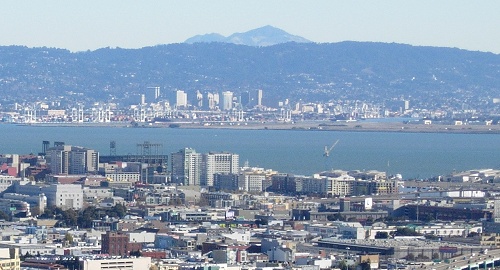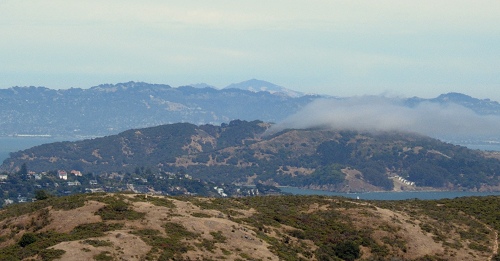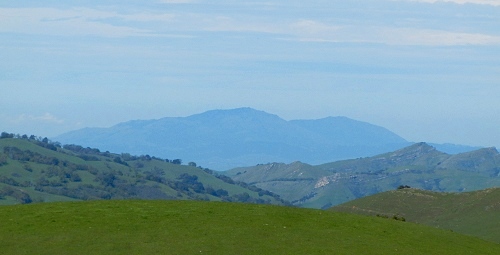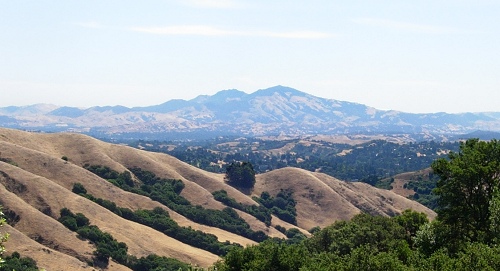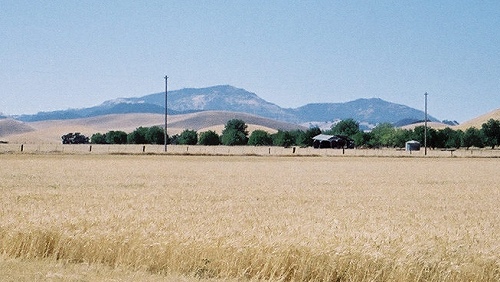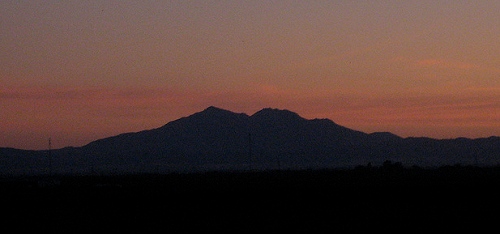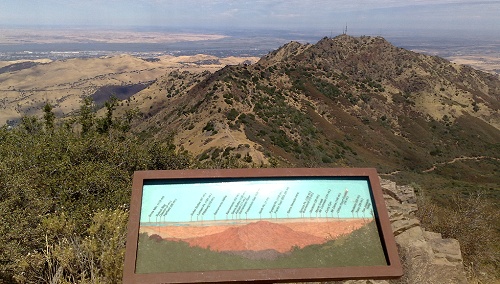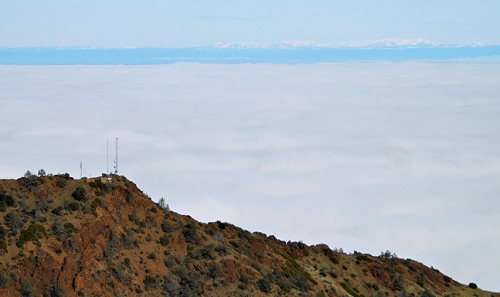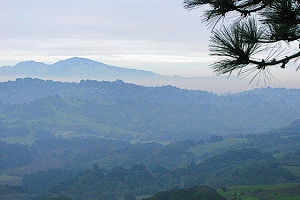 Mount Diablo is seen with its foothills from Wildcat Canyon Road near Inspiration Point in the Berkeley Hills. Photo courtesy Seán O'Hara of Flickr under Creative commons license. Photos by Andrew Alden unless otherwise indicated.
Mount Diablo is seen with its foothills from Wildcat Canyon Road near Inspiration Point in the Berkeley Hills. Photo courtesy Seán O'Hara of Flickr under Creative commons license. Photos by Andrew Alden unless otherwise indicated.
Mount Diablo, in the heart of the East Bay, is an interesting mountain in many ways. It has fossils. It has a lot of serpentinite in it, with the accompanying serpentine plant community. It's been mined for mercury and other metals. It's an exceptional structure even in a region of crazy-complicated tectonic structures. But I expect to get into the geological details some other time. Because first of all, Mount Diablo is just there.
Mount Diablo was always a landmark, so widely visible around the Bay and central California that in 1851 its peak was named the base line for land divisions. Around here and across the majority of California and all of Nevada, every township and section is numbered in relation to the north-south Mt. Diablo Meridian and the east-west Mt. Diablo Base Line. (Full details are given by the Mount Diablo Surveyors Historical Society.)
Today few of us have any awareness of land division, and we can simply enjoy the peak's prominence as we drive Bay Area roads or hike the hills. Around the Bay proper, Mount Diablo peeks over the Berkeley Hills as seen from Corona Heights in San Francisco . . .

